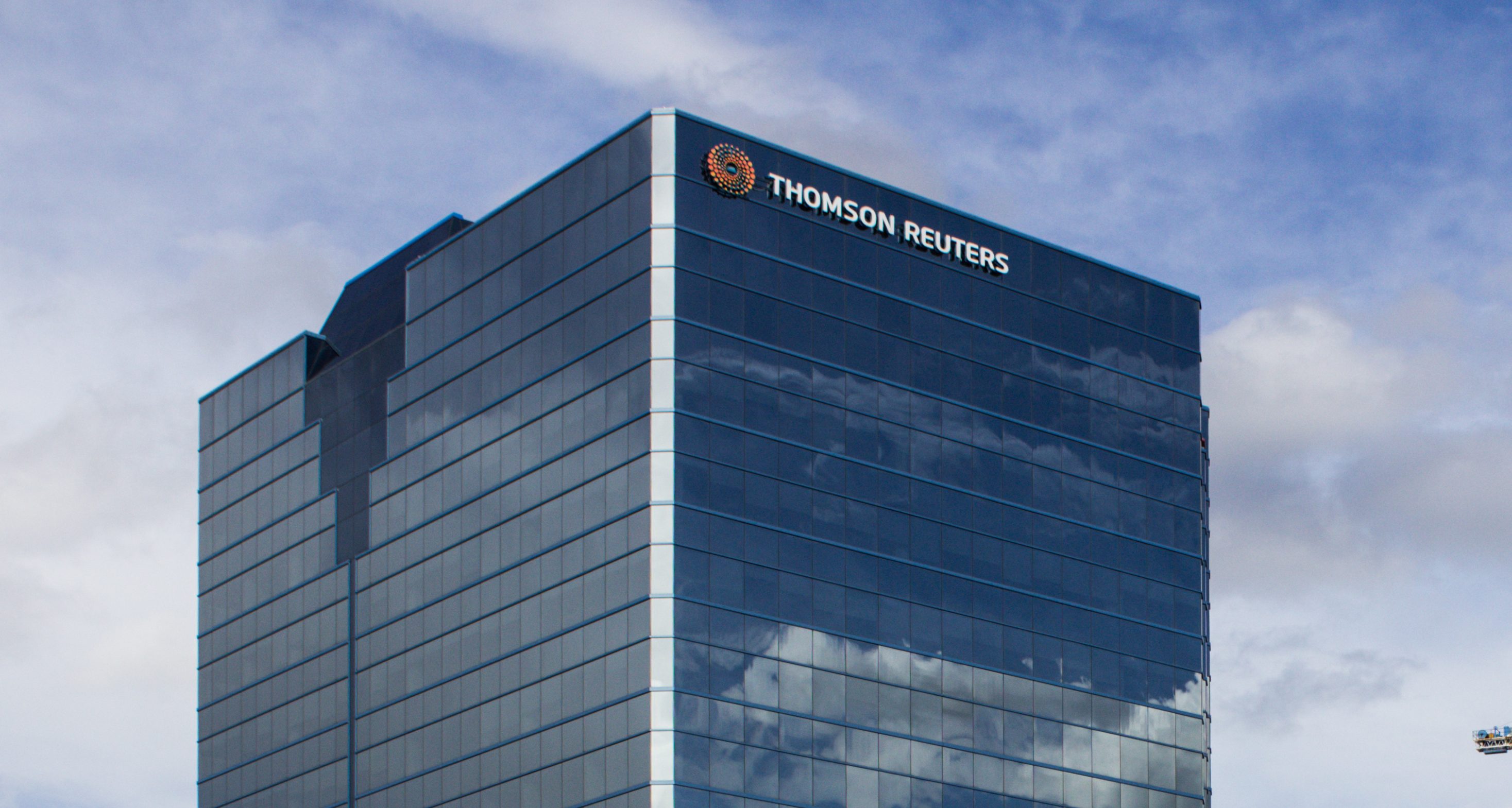What happens when the Fed cuts at all-time highs?… why Luke Lango says rates are less relevant… the AI buildout rolls on… another no-brainer AI investment… quarterly performance from Amazon and Apple
VIEW IN BROWSER
Here’s a Halloween Pop Quiz:
Wednesday marked only the fifth time that the Federal Reserve has cut interest rates when the S&P is trading at all-time highs…
Does history suggest that the next 12 months will bring tricks or treats for market returns?
Ready?
According to JPMorgan, in each of these five instances, the S&P was higher one year later with an average return of 20%.
The worst performance?
A “measly” 15% higher.
Now, that alone should invigorate the bulls. But we can take it one step farther…
What if – for the most explosive parts of today’s market – the Fed and its interest rate policy didn’t even matter that much for the foreseeable future? So, even if the Fed doesn’t cut rates again in December, prospective gains won’t slow?
Our hypergrowth expert Luke Lango, editor of Innovation Investor, made this case yesterday:
Increasingly, the Fed does not matter – not in the way it used to.
Once, a hawkish Fed would kill stocks, and a dovish one would ignite a rally. But we are in a new regime now.
In today’s market, artificial intelligence is the new center of gravity. And AI does not care whether Jerome Powell cuts again in December…
Instead, the thing keeping U.S. equities afloat is the AI buildout…
Data centers. Power infrastructure. High-performance chips. Advanced packaging. Cooling. Grid upgrades. Industrial equipment.
That is the capex supercycle.
Federal Reserve Chairman Jerome Powell admitted as much in his press conference on Wednesday:
I don’t think that the spending that happens to build data centers all over the country is especially interest-sensitive.
We’ve been urging investors to get exposure to this AI buildout for months
This is one of those powerful tailwinds that will juice portfolios for the next several years. But it could be even bigger than the hyperscalers have let on…
Yesterday, Joe Lonsdale, co-founder of Palantir and founder of venture firm 8VC, said that Big Tech is downplaying the scope of resources they’ll need to achieve their AI goals.
From Lonsdale:
[These companies are] afraid to scare their investors, and so they are telling them they need a lot less capital, a lot less energy than they know they actually do…
If anything, I think we’re underestimating how much investment is going to go into this space and how much we’re going to need.
So, what’s the investment action step?
Back to Luke:
Own the companies building the compute backbone of the next industrial platform, the power equipment firms wiring up the new grid for those data centers, the infrastructure enablers of the most aggressive private-capex boom we’ve seen in modern history…
Because if the Fed cuts in December, AI spending will be big. And if it doesn’t, AI spending will still be big.
But all this AI infrastructure – the data centers, chips, and cooling systems – points toward another investible opportunity…
AI has an insatiable appetite for energy.
So, as AI becomes more powerful, it will demand even more electricity.
Luke, along with Louis Navellier and Eric Fry, identified one of the sources of this added energy demand in yesterday’s issue of Power Portfolio. This service features a “best of” compilation of stocks from our three lead analysts.
From the crew:
Generative AI video is now beginning to take hold, and this technology requires exponentially more energy than traditional language models.
One study from Hugging Face finds that doubling the height, width, or temporal (time) dimensions of a video quadruples the amount of computing required.
This makes generative video projects like OpenAI’s Sora app enormous energy hogs.
Each five-second video can use as much energy as a microwave running for an hour or more, and OpenAI is now projected to burn through $115 billion in cash through 2029. (That’s enough to run a high-powered microwave for 65 million years.)
Bottom line: One of the best ways to play AI – in addition to tech infrastructure buildout – is through power itself.
One example of a company in the crosshairs of this opportunity is Oklo (OKLO). It’s pioneering a new era of compact nuclear reactors designed to deliver clean, reliable, and scalable power – exactly what the AI revolution requires to sustain its explosive growth.
Now, Oklo isn’t some obscure story we just stumbled across. It’s a company uncovered by Andy and Landon Swan’s cutting-edge data engine – a system that tracks millions of online conversations, search trends, and spending patterns to pinpoint the next breakout opportunities before Wall Street even notices.
How the Swan Brothers found OKLO
Whenever consumers take to the internet to talk about or search for a product, the Swans’ proprietary data system captures that activity in real-time.
It then connects those trends back to publicly traded companies, distilling it all into a “Social Heat Score” that highlights where real-world enthusiasm is building fastest. That’s how they spotted OKLO early and were on board before it then surged more than 450%.
But the Swan brothers aren’t the only ones using data to beat the market…
For decades, legendary investor Louis Navellier has built his reputation on using quantitative data to generate triple-digit returns for his readers. His Stock Grader system has uncovered 676 stocks that could have doubled your money or more.
As we’ve been profiling this week, Louis just teamed up with Andy and Landon to create a hybrid stock-picking system that fuses Louis’ quantitative fundamental methodology with the Swans’ real-time social data.
Backtests show that their combined system dug up 240 double-your-money opportunities over just five years, with an average gain of 244%.
They dove into the details earlier this week at their “Ultimate Stock Strategy” event. If you missed it, the free replay is still available here.
Another reason to focus on investing in AI-related energy plays
On Sunday, the Wall Street Journal ran a piece titled “More Big Companies Bet They Can Still Grow Without Hiring”.
From the piece:
It is the corporate gamble of the moment: Can you run a company, increasing sales and juicing profits, without adding people?
American employers are increasingly making the calculation that they can keep the size of their teams flat—or shrink them through layoffs—without harming their businesses.
Part of that thinking is the belief that artificial intelligence will be used to pick up some of the slack and automate more processes.
As we’ve been covering extensively in the Digest, companies are increasingly turning to AI and robotics, using them to replace human workers. The logic and calculation behind this is straightforward.
From our Wednesday Digest:
Humans: massive salary expense, benefits expense, sick days, vacation days, human error on the job…
AI/Robotics: one-time CapEx expense for AI software and/or robotics, marginal yearly maintenance expense, perfect job execution with no need for rest/breaks/benefits/and so on…
But don’t take it from me. Here’s Airbnb’s CEO Brian Chesky:
If people are getting more productive [thanks to AI], you don’t need to hire more people.
I see a lot of companies pre-emptively holding the line, forecasting, and hoping that they can have smaller workforces.
This underscores one reality that wise investors – and employees – will recognize today…
The next decade will witness a massive reallocation of corporate capital – away from payrolls, into power.
The transition from human output to AI output will create a seismic shift across the global energy landscape
According to Goldman Sachs, U.S. data center electricity demand is set to double by 2030, and that estimate may already be conservative.
The International Energy Agency has recently warned that the AI boom alone could consume as much power as an entire industrialized nation, such as Japan, within just a few years.
That explains why some of the most forward-looking firms are racing to secure long-term energy contracts or to invest directly in their own generation capacity.
As we’ve covered in past Digests, Microsoft and Amazon are already locking in deals with renewable producers. Google is experimenting with geothermal. And a handful of smaller innovators – like Oklo – are developing compact nuclear reactors to provide 24/7 clean power where traditional infrastructure can’t reach.
The implications go far beyond Big Tech. Every AI-enabled industry – including logistics, finance, healthcare, and manufacturing – will need dependable, affordable electricity to compete.
Here’s Sam Altman, CEO of OpenAI:
Electricity is not simply a utility. It’s a strategic asset that is critical to building the AI infrastructure that will secure our leadership on the most consequential technology since electricity itself.
Bottom line: We’re at the beginning of a new “golden age” for energy, driven by exponential computing demand. This deserves a place in your portfolio.
But let’s take it one step further…
The opportunities won’t stop at an electricity buildout for tomorrow.
Let’s return to Luke to explain why, and tell us where to look today to get ahead of the curve:
Hyperscalers are under intense pressure to ditch diesel and move to clean, modern, always-on solutions.
That’s why a new consensus is emerging: every AI data center should pair its grid power with onsite energy storage.
So, SMRs, gas, and renewables will keep the lights on, while batteries and fuel cells will keep things running even if the grid hiccups.
It’s a two-front energy war – power generation and reliability. And Wall Street hasn’t priced in the second front yet…
This is a bigger story that will require more space than we have for the rest of today’s Digest. So, we’ll circle back.
But here’s Luke’s preview:
Wall Street’s still asleep at the wheel.
Investors are treating batteries and fuel cells like some clean-tech sideshow. They’re not seeing what’s right in front of them: these systems are core AI infrastructure.
That’s the blind spot – and the opportunity.
A quick recap of Amazon and Apple earnings
Yesterday, after the closing bell, Amazon reported that it beat on both revenues and earnings, while lifting its capital expenditures forecast to $125 billion for the year (from $118 billion).
Wall Street is cheering sales at Amazon Web Services, which climbed 20% from last year. The stock is up 10% as I write.
Apple also beat on both the top and bottom lines, but iPhone sales in China just missed forecasts, which is weighing on the stock slightly (AAPL is flat as I write).
However, management was bullish on Q4, forecasting revenue to climb 10% – 12% thanks to iPhone 17 upgrades.
Overall, the Magnificent Seven earnings this week have been strong – certainly nothing that’s dinging Wall Street’s enthusiasm for AI.
And so, the party rolls on…
(Disclaimer: I own AMZN and AAPL.)
Have a good evening and Happy Halloween,
Jeff Remsburg








